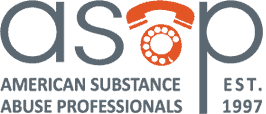As previously advised, the 49 CFR Part 40 Final Rule, effective January 1, 2018, was published in the Federal Register on November 13, 2017: 49 CFR Part 40 Procedures for Transportation Workplace Drug and Alcohol Testing Programs: Addition of Certain Schedule II Drugs to the Department of Transportation’s Drug-Testing Panel and Certain Minor Amendments. This rule finalizes the Notice of Proposed Rulemaking published in the Federal Register on January 23, 2017, at 82 FR 7920. The complete text of the rule is available at https://www.gpo.gov/fdsys/pkg/FR-2017-11-13/pdf/2017-24397.pdf.
At this point, service agents and DOT covered employers are preparing for the practical impacts of the Final Rule. This advisory addresses one of those impacts; which Federal Custody and Control Form may be used for DOT regulated testing on January 1, 2018, when the Rule becomes effective.
SAPAA has consulted with Industry Officials and testing laboratories on this topic and shares our general understanding as follows:
- A revised Federal Custody and Control Form (CCF) was issued for federal drug testing in August of 2017.
- The August 2017 CCF replaces the current 2013 version of the federal CCF and is very similar.
- The 2017 CCF added hydrocodone, hydromorphone, oxycodone, and oxymorphone to Section 5A (primary specimen report) on CCF copy 1 and changed Section 1D to have only one block checked for a DOT agency test.
- The 2017 federal CCF cannot be used for DOT testing before January 1, 2018.
- Laboratories will begin distributing the 2017 CCFs to collections sites and/or employer sites on January 1, 2018.
- The 2017 CCFs will have new DOT drug testing panel codes pre-printed in Step 1F of the CCF.
- The 2013 CCF can be used until June 30, 2018. Please note that any specimen arriving at the laboratory after December 31, 2017, with a federal CCF marked as a DOT test in Step 1D will be tested for the expanded drug panel and in compliance with Part 40 Final Rule requirements.
- There is no requirement for statement of correction when a 2013 CCF is used. However, after June 30, 2018, a statement of correction detailing why an expired CCF was used will be requested by the laboratory.
- MROs are permitted to report positives for the expanded opioid drugs after January 1, 2018, using the 2013 CCF copy 2.
MRO Sections (Step 6 & 7) of CCF Copy 2 are the same on the 2013 and 2017 CCFs. The MRO simply writes in the name of the drug(s) the specimen is verified positive for.

